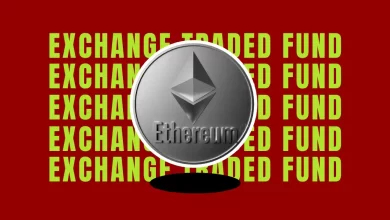A match made in heaven, ET BrandEquity

To say that the world of cryptocurrency has grown exponentially would be an understatement. The number of crypto wallets which grew by a staggering 2700 per cent to stand at an eye watering USD 2.72 trillion mark as of March 2024, are also slated to hit the USD 47 billion value mark by 2030. While Asian countries together with the UK and US, account for 78 per cent of all forex trading worldwide, it’s India which continues to witness the highest crypto adoption rates globally.The India phenomenon!
A thriving IT industry and an enthusiastic young demographic participating in various fintech industries has given India an edge in the global fintech movement.
Between July 2022 and June 2023, India saw an influx of USD 250 billion of crypto value, putting it second only to the US in that same period. While India is projected to have over 328 million crypto users by 2028, its forex market’s growth projection also stands at an impressive CAGR (compound annual growth rate) of 9.2 per cent between 2024 to 2032.
continued below
Advantage crypto and forex!
As two big businesses, crypto and forex both have large lucrative markets and a great exponential growth potential. Their decentralized nature makes it ripe for use with smartphones. With the ubiquity of smartphones and how users interact and participate in modern finance, the need of the hour is for fintech apps to efficiently target potential users and secure downloads without breaking the bank. The obvious question is, how?
At this point, it’s important to take a step back and understand the dynamics of this space.
Cryptocurrency and Forex trading applications face more stringent regulations compared to other financial tech apps, largely due to policies from tech giants.
Facebook mandates written permission before advertising cryptocurrency trading or related services, outright banning token sales advertisements.
Google, as part of the 2021 Developer Program Policy for its Android platform stated that any app integrating digital assets such as NFTs will need to go through its special application process. Any trading or gambling app that does not meet Google’s requirements are not allowed to exchange money to obtain NFTs, nor can these digital tokens be used in wagers or to win real-world money prizes.
Apple’s App Store Review Guidelines also prohibit on-device mining, permitting it only when processing is done off the device, like cloud-based mining. Even though it allows cryptocurrency transaction apps directly provided by an exchange, it still restricts them to provide any reward or incentive based currency or digital tokens.
In December 2023, both Apple and Google removed some of the worlds largest crypto and trading apps – also known as virtual digital assets service providers (VDAs) – from their app stores, citing non compliance to India’s money laundering laws, including Binance, the world’s largest crypto and trading app with over 170 million users worldwide and with a total trading volume of USD 7.7 trillion (as of 2021).
Another leading app, Coinbase was blocked by Apple until it had either removed it’s NFT transfer feature, or treated the NFT transfer feature as an in-app purchase, thereby imposing their 30 per cent fee.
Apps from these categories need to not only diversify their presence, but also the means of distribution and advertising to avoid a deathblow.
Enter Mobile OEMs and their Owned App Stores
Mobile OEMs like Xiaomi, Huawei, Vivo, Oppo and Transsion among others distribute apps through their independent alternative app stores to a wide audience. They allow financial product advertising with certain certifications. Here’s how digital marketers of fintech apps can benefit when they incorporate mobile OEM advertising in their larger marketing mix.
- Targeted Advertising: OEMs offer sophisticated targeting options that can lead to lower Cost per Install (CPI) and higher engagement rates, unlocking the potential for user base growth.
- Access to User Data: With OEMs, advertisers can access detailed user data while adhering to GDPR regulations.
- Global Reach: OEM platforms serve a global audience, enabling advertisers to target lookalike users in new markets for expanded business operations.
- Flexible Campaign Models: OEMs support various campaign models, including CPI, Cost per Revenue (CPR), and Cost per Action (CPA), especially beneficial for trading apps using CPR campaigns.
- Fraud Protection: OEMs provide a direct link between advertisers and their platforms, ensuring a fraud-free advertising ecosystem and controlled ad placements.
Now is the time to take action
Fintech brands in India must partner with dynamic app growth marketing companies who specialise in mobile OEM on-device user acquisition and advertising across alternative app stores.
Their partnerships with leading mobile OEMs globally which cover 63 per cent of the global Android market helps Fintech brands to feature their apps on alternative app platforms. They also offer guidance throughout the campaign lifecycle for expanded reach and new revenue opportunities. Furthermore, some new age app growth companies have also launched their proprietary tools which fine-tune campaigns in real-time across mobile OEM inventory, aligning them with performance goals for enhanced Return On Ad Spend (ROAS).
More and more countries, India included, are adopting legislation similar to the EU Digital Markets Act, paving the way for mobile OEMs and their alternative app stores to have a stronger foothold in the mobile space. As such now is the perfect time for fintech apps to get in on the ground floor of this flourishing means of mobile advertising and user acquisition.
Most Read in Marketing
Join the community of 2M+ industry professionals
Subscribe to our newsletter to get latest insights & analysis.
Download ETBrandEquity App
- Get Realtime updates
- Save your favourite articles



